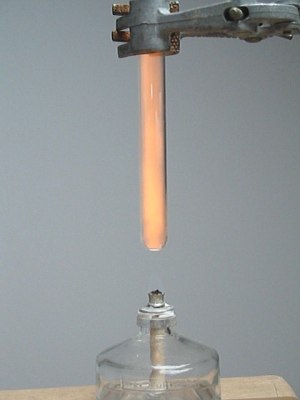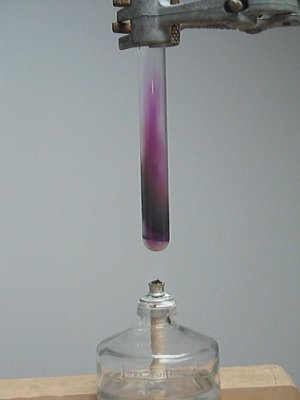
woelen - 16-3-2009 at 13:26
I made some ammonium bromate and ammonium iodate. Both are energetic compounds, but ammonium bromate is more so than ammonium iodate. The
decomposition of these chemicals is nice to see on its own.


These are not useful as explosives, but they are funny lab curiousities/toys, which I want to share with you.
http://woelen.homescience.net/science/chem/exps/ammoniumhala...
One remarkably thing is that in the decomposition of the ammonium bromate the entire test tube is filled with light and not just the area near the
solid material at the bottom. How can this be explained? Did it first evaporate or pulverize very fast and then decompose with emission of light? I
myself have no good explanation for this observation.
[Edited on 16-3-09 by woelen]
Formatik - 16-3-2009 at 20:17
The bromate decomposition seems especially interesting. Though neither salts have quite the kick of the chlorate, eh?
Axt - 16-3-2009 at 23:18
<b>Explosive properties of some unstable salts: ammonium nitrite and ammonium bromate</b>. Shidlovskii, A. A.; Shmagin, L. F.;
Popovich, A. S.; Rogozhnikov, V. M. Mosk. Inst. Khim. Mashinostr., Moscow, USSR. Doklady Akademii Nauk SSSR (1968), 181(2), 415-17. .
Journal written in Russian.
Solid NH4NO2 was obtained by evapn. of an aq. soln.; the yield was 50% and the purity was 98.5-9.5%. The wt. loss of NH4NO2 stored for 1.5 months in
a desiccator with anhyd. CaCl2 was 10%. The d. of NH4NO2 detd. in anhyd. solvents is d20 = 1.49. The d. of tablets pressed at 3000 kg./cm.2 is
1.45-7. The flash temp. of NH4NO2 is 89-90; shock sensitivity is 6.5 times that of cyclotrimethylenetrinitramine. Linear burning rate in glass tubes
(diam. 2-10 mm.) is 0.55 and 0.36 mm./sec. at a d. of 0.7 and 1.0 g./cc., resp.; in tubes 1.7 mm. in diam., the burning did not propagate. Addn. of
1% K2Cr2O7 or 2.5% NH4 molybdate increased the burning rate by one order of magnitude. Addn. of K4Fe(CN)6 decreased the burning rate. The following
explosive properties of NH4NO2 were detd.: working capacity in a Pb bomb, 350 cc. (as compared with that of trinitrophenylmethylnitramine, 390 cc.),
detonation velocity 5250-300 and 7640-840 m./sec. at a d. of 1.04 and 1.45 g./cc., resp., and heat of explosion (H2O as vapor) 54 kcal./mole.
Propagation of full detonation occurred in glass tubes of 4.0-mm. diam. at a NH4NO2 d. of 1.0, whereas it did not occur in tubes of 2.3-mm. diam.
NH4BrO3 of 98.5-9.5% purity was also investigated. The following properties were detd.: d20 in n-C7H16 2.70, soly. in H2O 11.7 g./100 g. H2O at 20,
d20 of satd. aq. soln. 1.073, heat of dissoln. in H2O 7.63 kcal./mole, heat of explosion (H2O as vapor) 63 kcal./mole, approx. explosion temp. 2500,
and flash temp. 65-70. It partially decomp. on storing in a desiccator with anhyd. CaCl2 after 2-3 hrs., as does a satd. aq. soln. Dry NH4BrO3 shows
very high friction sensitivity; after ignition, a deflagration or explosion was observed. NH4NO2 and NH4BrO3 seem to be of no practical value as high
explosives due to their low chem. stability and high sensitivity to mech. and thermal shock.


